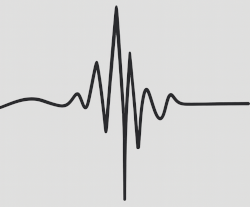1759 CE Safed and Baalbek Quakes










Two powerful earthquakes struck on 30 October (Safed Quake) and
25 November (Baalbek Quake) in 1759 CE, each followed by a series of aftershocks. The shocks
caused heavy destruction and numerous deaths in Lebanon,
Syria, and northern Palestine. Based on paleoseismic trenching,
geomorphological surveys, and a report from the French Consul
in Saida (Sidon) describing a fissure over 110 km long near Baalbek,
Daëron et al. (2005) proposed that the 1759
earthquakes resulted from rupture of the Rachaiya Fault in
October, followed by rupture of the Serghaya Fault in November.
They estimated (2σ) magnitudes of 6.4–7.3 and 7.0–8.0
respectively.
Both earthquakes caused death and destruction in Damascus,
although the second earthquake on 25 November produced
higher levels of local intensity. Casualties may have been fewer in the second event
because much of the population had left their homes to live in
tents in the countryside after the initial 30 October shock.
After both earthquakes, a
letter from the French Consulate in Saida (Sidon)
stated that Damascus was “three quarters destroyed,” while
another letter from Archbishop
Boutros Jalfaq
of Sidon wrote that Damascus suffered “severe destruction” and
“at least several hundred dead.”
Dr. Patrick Russell,
a Scottish surgeon and naturalist living in Aleppo at the time,
wrote a long letter describing both earthquakes. After the 30 October
shock, he reproduced parts of a letter from Damascus which stated that
the earthquake had “done considerable damage.” After the 30 November
shock, he reproduced parts of another letter written around 3 December:
Damascus was now one third “thrown down,” and many people “perished in
the ruins.” The survivors fled the city to sleep in the fields due to
continuing aftershocks, which impeded relief efforts. Russell noted
that some reports claimed 20,000 dead in Damascus, though he believed
this number exaggerated.
The earthquakes were also reported in European newspapers.
The London Chronicle
had a terse entry stating that Damascus was struck by a “dreadful
earthquake,” after which it “was visited with the plague.”
La Gazette de France
offered more detail, noting that two earthquakes (30 October and 25 November)
had struck the Levant and that Damascus was “badly damaged.” Aftershocks
were “so numerous that they cannot be counted,” and the city was “no more
than a heap of ruins.” It also reported that people were living outdoors
in tents after the quakes.
Although some reports contained exaggerations, damage appears to have
been extensive. Ottoman Work Orders in Damascus show that “no fewer than 430
structures” required “full or partial repair,” including the
Great Umayyad Mosque
, the
Selimiye Mosque
, numerous smaller
mosques,
madrasas
,
soup kitchens (imāret/takiyya)
, walls, gates, domes, and the
Tomb of Ibn ʿArabī, Damascus
(Ayalon, 2014).
Contemporaneous source
Ahmed al-Budayr,
the “Barber of Damascus,” as quoted by
Abou Karaki (1987)
from Taher (1979), reported that after the two
earthquakes the “upper parts of almost all minarets of the mosques of Damascus
fell.” There was “much destruction and many victims,” and the upper parts of
the east and west minarets of the Umayyad Mosque collapsed onto its side,
destroying part of the three
mihrabs
. The
al-Nasr Dome
and the entire northern part of the Umayyad Mosque collapsed. Continuing
tremors caused “the collapse of the eastern and northern walls of the eastern
minaret.” Around 15 mosques were damaged, and cracks were seen in the eastern
wall of the al-Mazbour Mosque.
Al-Budayr also recorded that the 25 November
earthquake lasted four minutes and the 30 October shock two to three minutes.
As paraphrased by Ayalon (2014: 61),
Mikhaʾil al-Burayk
produced an eyewitness account of both earthquakes as experienced in Damascus.
The 30 October shock woke people up; that morning they found “many houses razed,
and parts of the Umayyad and other mosques damaged.” The 25 November earthquake
was a “strong and frightening earthquake” in which “walls were torn down,
foundations weakened, minarets collapsed, and the Umayyad mosque with its
minarets, domes and baths was destroyed.” He added that numerous other
buildings, including the Greek Church, were ruined. Fires broke out in many
quarters, and a mass exodus of residents left the city to live temporarily in
gardens surrounding Damascus, where they set up huts as provisional lodging —
a strong indication of continuing energetic aftershocks.

